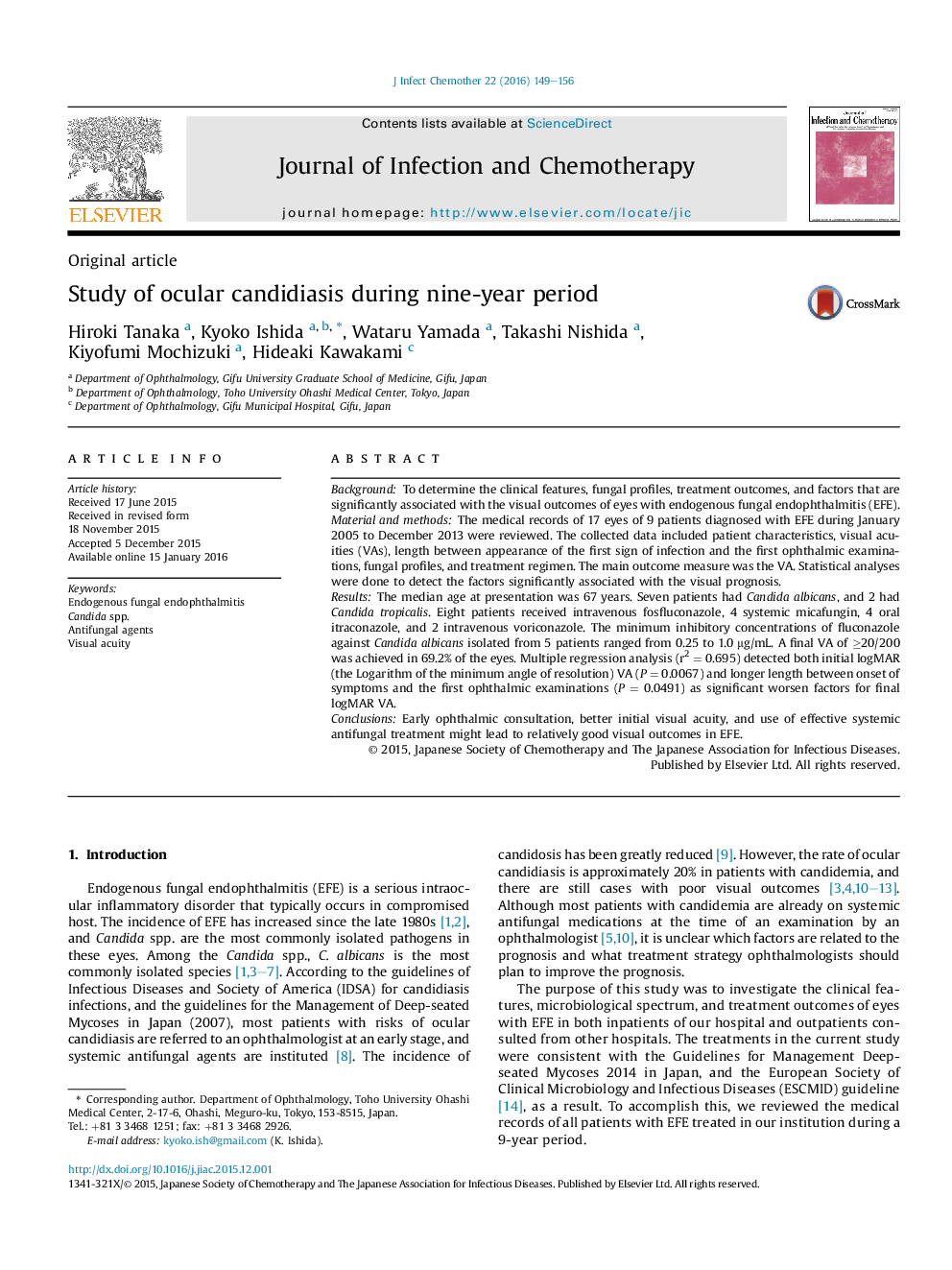| Article ID | Journal | Published Year | Pages | File Type |
|---|---|---|---|---|
| 3376684 | Journal of Infection and Chemotherapy | 2016 | 8 Pages |
BackgroundTo determine the clinical features, fungal profiles, treatment outcomes, and factors that are significantly associated with the visual outcomes of eyes with endogenous fungal endophthalmitis (EFE).Material and methodsThe medical records of 17 eyes of 9 patients diagnosed with EFE during January 2005 to December 2013 were reviewed. The collected data included patient characteristics, visual acuities (VAs), length between appearance of the first sign of infection and the first ophthalmic examinations, fungal profiles, and treatment regimen. The main outcome measure was the VA. Statistical analyses were done to detect the factors significantly associated with the visual prognosis.ResultsThe median age at presentation was 67 years. Seven patients had Candida albicans, and 2 had Candida tropicalis. Eight patients received intravenous fosfluconazole, 4 systemic micafungin, 4 oral itraconazole, and 2 intravenous voriconazole. The minimum inhibitory concentrations of fluconazole against Candida albicans isolated from 5 patients ranged from 0.25 to 1.0 μg/mL. A final VA of ≥20/200 was achieved in 69.2% of the eyes. Multiple regression analysis (r2 = 0.695) detected both initial logMAR (the Logarithm of the minimum angle of resolution) VA (P = 0.0067) and longer length between onset of symptoms and the first ophthalmic examinations (P = 0.0491) as significant worsen factors for final logMAR VA.ConclusionsEarly ophthalmic consultation, better initial visual acuity, and use of effective systemic antifungal treatment might lead to relatively good visual outcomes in EFE.
